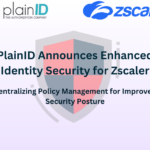A
s organizations increasingly adopt Single Sign-On (SSO) to enhance security and simplify user access, it is essential to implement these systems in line with industry best practices. The Cybersecurity and Infrastructure Security Agency (CISA) has recently issued updated guidelines to help businesses adopt SSO securely and effectively. These recommendations aim to minimize risks while maximizing the benefits of SSO, making it a powerful tool for modern access management.
Single Sign-On streamlines access by allowing users to log in once and access multiple applications without additional authentication. While this enhances user convenience and productivity, it also introduces potential risks if not implemented properly. Credential theft and unauthorized access can compromise sensitive data, which is why CISA emphasizes a layered security approach to protect SSO systems.
One of the most critical best practices highlighted by CISA is the integration of Multi-Factor Authentication (MFA) with SSO. While SSO reduces the need for multiple passwords, MFA adds an additional layer of protection by requiring users to verify their identity through multiple factors, such as biometrics or one-time codes. This combination significantly reduces the risk of credential-based attacks.
CISA also stresses the importance of enforcing least privilege access. Organizations should limit user access to only the resources necessary for their roles. This principle, combined with identity governance frameworks, minimizes the risk of unauthorized access and insider threats. Additionally, organizations should use strong authentication protocols, such as SAML, OAuth, or OpenID Connect, to ensure secure communication between identity providers and service providers.
Another key recommendation is the continuous monitoring and auditing of SSO activity. Regularly reviewing logs for suspicious behavior, such as unusual login locations or repeated failed attempts, can help detect potential security breaches early. Automated tools can further enhance this process by flagging anomalies in real-time. Securing the Identity Provider (IdP) is also crucial, as it forms the backbone of any SSO system. Keeping the IdP up to date with the latest patches and hardened configurations ensures a robust defense against threats.
Organizations must also educate and train their users to recognize common security risks, such as phishing attempts, and to follow best practices for password hygiene. While SSO simplifies access, the human factor remains a critical element of security. Proper training ensures employees are equipped to use these systems safely and effectively.
Despite its many advantages, SSO implementation is not without challenges. Credential-based risks persist, as compromised SSO credentials can grant attackers access to multiple applications. Additionally, integrating SSO with legacy systems and third-party applications can be complex and may introduce gaps in security. Over-reliance on SSO can also pose issues during outages, emphasizing the need for fallback authentication mechanisms.
CISA’s guidelines serve as a comprehensive roadmap for organizations to implement SSO securely. By adopting a layered security approach, integrating MFA, and following strong authentication and monitoring practices, businesses can leverage SSO to enhance user convenience while safeguarding their systems. As cyber threats evolve, adhering to these best practices will ensure organizations remain resilient and secure in their access management strategies.




